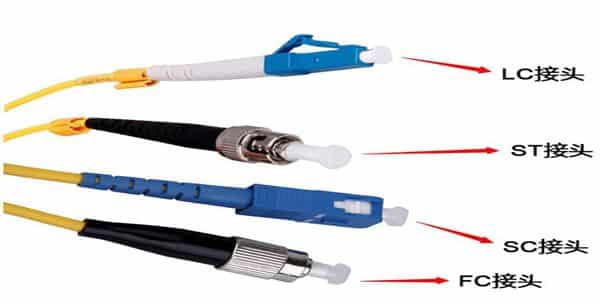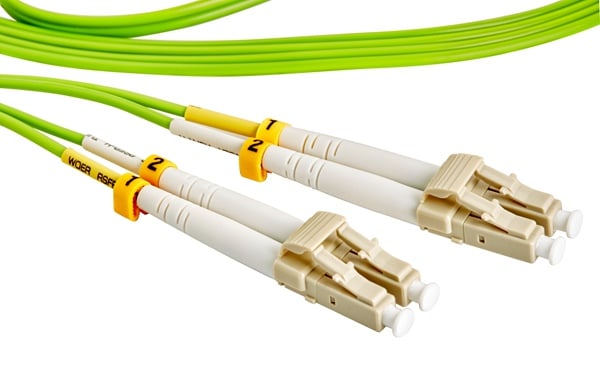The current era is getting better and better, the advancement of technology and the network are following progress. We may not know much about fiber-optic communication. Let’s share some basic knowledge points of fiber-optic communication. I hope to help everyone!
Optical fiber communication refers to the communication method of modulating the voice, image and data signals to be transmitted on the optical carrier and using the optical fiber as the transmission medium.
1. Intrinsic: is the inherent loss of fiber, including Rayleigh scattering, inherent absorption.
2. Bending: When the fiber is bent, the light in some of the fibers will be lost due to scattering, resulting in a loss.
3. Extrusion: Loss caused by tiny bends in the fiber when it is squeezed.
4. Impurities: Impurities in the fiber that absorb and scatter light propagating in the fiber.
5. Unevenness: loss due to the uneven refractive index of the fiber material.
6. Docking: The loss generated when the fiber is docked, such as different axes (single mode fiber coaxiality requirement is less than 0.8μm), the end face is not perpendicular to the axis, the end face is not flat, the butt diameter is not matched, and the welding quality is poor.
7. Multimode fiber: The center glass core is thick (50 or 62.5μm) and can transmit multiple modes of light. However, the dispersion between the modes is large, which limits the frequency of transmitting digital signals, and is more serious as the distance increases. For example, a fiber of 600 MB/KM has a bandwidth of only 300 MB at 2 KM. Therefore, the distance traveled by the multimode fiber is relatively close, usually only a few kilometers.
8. Single-mode fiber: The center glass core is thin (the core diameter is generally 9 or 10 μm), and only one mode of light can be transmitted. Therefore, the inter-mode dispersion is small, suitable for remote communication, but its chromatic dispersion plays a major role, so that single-mode fiber has high requirements on the spectral width and stability of the light source, that is, the spectral width is narrow and the stability is good…
9. Conventional fiber: The fiber production family optimizes the fiber transmission frequency to a single wavelength of light, such as 1300 μm.
10. Dispersion-shifted fiber: The fiber-optic production family optimizes the fiber transmission frequency to two wavelengths of light, such as 1300 μm and 1550 μm.
11. Mutant fiber: The refractive index of the fiber core to the glass cladding is abrupt. The cost is low and the dispersion between the modes is high. Suitable for short-distance low-speed communication, such as industrial control. However, single-mode fibers use a mutant type because of the small dispersion between modes.
12. Gradient fiber: The refractive index of the fiber core to the glass cladding is gradually reduced, which can make the high mode light sinusoidal. This can reduce the dispersion between modes, increase the fiber bandwidth, increase the transmission distance, but the cost is higher. Most of the multimode fibers are graded fibers.
13. Electric transmitter: The main task is PCM coding and signal multiplexing.
Multiplexing means that multiple signals are combined on one physical channel for transmission. At the receiving end, special signals are used to separate the signals. Multiplexing can greatly improve the utilization of communication lines.
In a fiber-optic communication system, a binary optical pulse “0” code and a “1” code are transmitted in an optical fiber, which is generated by switching a binary digital signal to a light source. The digital signal is generated by sampling, quantizing and encoding a continuously changing analog signal, called PCM (pulse code modulation), that is, pulse code modulation. This electrical digital signal is called a digital baseband signal and is generated by a PCM electrical machine.
14. Sampling: The process of discretely extracting a portion of a sample from a continuous analog signal of the original time and amplitude into a discrete digital signal of time and amplitude.
15. Coding: refers to the M signals sampled by a set of binary or other hexadecimal numbers according to certain rules. Each signal can be represented by N 2 binary numbers, M and N satisfy M= 2N. For example, if there are 8 kinds of quantized amplitudes, each amplitude needs to be represented by 3 binary sequences when encoding.
16. Time division multiplexing: When the data transmission rate reached by the channel is greater than the sum of the data transmission rates of the respective signals, the time of using the channel can be divided into time slices (time slots), and the time slices are arranged according to certain rules. Assigned to each channel signal, each channel can only transmit on its own channel within the time slice, so the signals will not interfere with each other.
17. Frequency Division Multiplexing: When the channel bandwidth is greater than the total bandwidth of each channel, the channel can be divided into several subchannels, each of which is used to transmit one signal. In other words, the frequency is divided into different frequency segments, and signals of different paths are transmitted in different frequency bands, and the respective frequency bands do not affect each other, so signals of different paths can be simultaneously transmitted. This is Frequency Division Multiplexing (FDM).
18. Code Division Multiple Access (CDMA): This technology is mostly used for mobile communications. Different mobile stations (or mobile phones) can use the same frequency, but each mobile station (or mobile phone) is assigned a unique ” The code sequence” is different from all other “code sequences”, so each user does not interfere with each other. Because it is a different “code sequence” to distinguish different mobile stations (or mobile phones), it is called “code division multiple access” (CDMA) technology.
19. Space Division Multiple Access (SDMA): This technique uses spatial partitioning to form different channels. For example, multiple antennas are used on a single satellite, and the beams of each antenna are directed at different areas of the Earth’s surface. Earth stations in different regions on the ground, at the same time, even if they use the same frequency to work, there will be no interference between them.
Space division multiple access (SDMA) is a way of channel capacity expansion, which can achieve frequency reuse and make full use of frequency resources. Space division multiple access can also be compatible with other multiple access methods to implement a combined multiple access technique, such as Space Division-Code Division Multiple Access (SD-CDMA).
20. Line coding: Also known as channel coding, the function of the fiber jumper is to eliminate or reduce the DC and low-frequency components of the digital electrical signal for transmission, reception, and monitoring in the fiber. Generally, it can be classified into three categories: scrambling code binary, word transform code, and insert type code.
21. Modulation method: Analog communication can adopt various modulation methods such as amplitude modulation, frequency modulation, and modulation. When digital modulation is used, it is called amplitude shift keying (ASK), frequency shift keying (FSK), phase shift keying ( PSK); ASK with only two states of the signal is called On-Off Keying (OOK). The current digital communication system uses the OOK-PCM format, which is an intensity modulation-direct detection (IM-DD) communication method, which is the most Simple, initial level approach. Coherent communication systems can use ASK, FSK or PSK-PCM formats, which is a complex and advanced communication method.
22. Optical Receiver Sensitivity: Defined as the minimum input optical power required by the receiver to ensure that the required bit error rate is achieved.
23. Optical coupling: It is to split or combine the optical power of the same wavelength. Through the optical coupler, we can combine two optical signals into one road.
24. Optical isolator: A passive optical device that allows only unidirectional light to pass through. Its working principle is based on the non-reciprocity of Faraday rotation.
25. Fiber-optic jumper magneto-optical isolator: It can also be said to be a single-light guide. The isolator is placed in front of the laser and the optical amplifier to prevent the reflected light in the system from affecting or even impairing the performance of the device.
26. Optical Filter: An instrument used for wavelength selection that selects the desired wavelength from a wide range of wavelengths, and light other than this wavelength will be rejected. It can be used for wavelength selection, noise filtering of optical amplifiers, gain equalization, optical multiplexing/demultiplexing.
Filter based on interference principle: melt cone fiber filter, Fabry-Perot filter, multilayer dielectric film filter, Mach-Zehnder interference filter.
Filters based on grating principles: bulk grating filters, arrayed waveguide grating filters (AWG), fiber grating filters, acousto-optic tunable filters.
27. Fiber Connector: A device used to connect optical fibers. It is indispensable in fiber-optic communication systems and measuring instruments. It is different from fiber-optic fixed joints, can be disassembled, and is flexible to use, so it is also called fiber optic active connector or fiber optic movable joint. Generally, the optical fiber connector is required to have a small volume, small access loss, re-disassembly, high reliability, long life, and low price.
28. Optical attenuator: It is a device used to attenuate optical power. It is mainly used for index measurement of optical fiber systems, signal attenuation of short-distance communication systems, and system testing. The optical fiber jumper optical attenuator requires a lightweight, small volume, high precision, good stability, and convenient use. It can be divided into fixed, graded, and continuously adjustable
29. Optical amplification: refers to the realization of particle number inversion (except for nonlinear fiber amplifiers) under the action of pump energy (electricity or light), and then the amplification of incident light by stimulated radiation.
Disclaimer: All information indicated as other sources is transferred from other platforms, the purpose is to convey more information, does not represent the views and positions of this site. Please contact us if there is any infringement or objection.





